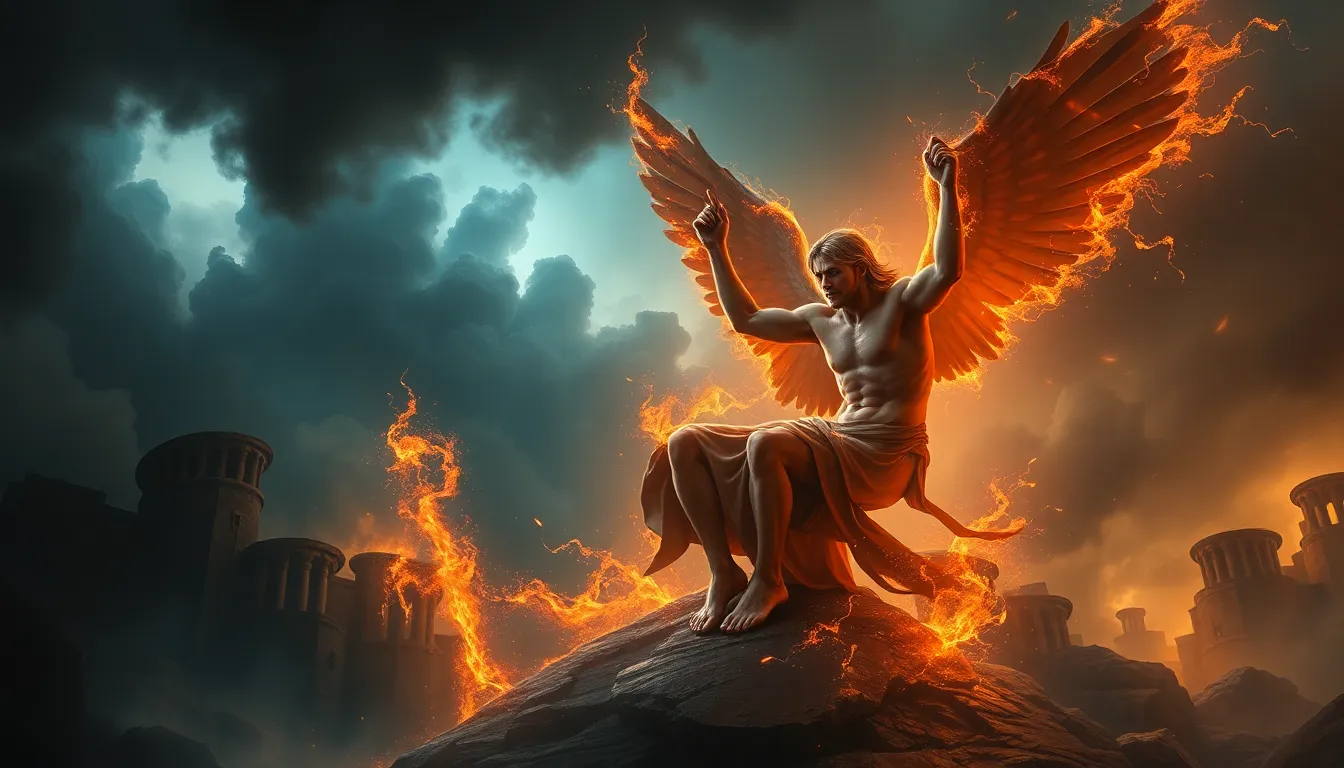Introduction: The Concept of the Three Realms
Chinese mythology encapsulates the concept of the Three Realms, a cosmological framework that divides the universe into three distinct spheres: the Immortal Realm, the Human Realm, and the Underworld. This framework serves as a foundational pillar of Taoist and Buddhist beliefs, influencing Chinese culture, art, and literature for centuries.
The Immortal Realm
The Immortal Realm, or Celestial Realm, is the abode of deities, immortals, and celestial beings. It is often depicted as a realm of paradise, where these celestial entities reside in eternal bliss. The Immortal Realm is believed to be located above the Human Realm and is accessible only to those who have attained spiritual enlightenment or have been granted immortality.
The Human Realm
The Human Realm, or Mortal Realm, is the realm where humans reside. It is characterized by the cycle of birth, death, and rebirth. Humans are believed to possess a soul that separates from the body upon death and moves on to the Underworld or reincarnates into another life. The Human Realm is influenced by the actions of both deities and demons, who can interact with humans and influence their destinies.
The Underworld
The Underworld, or Netherworld, is the realm of the dead. It is believed to be located beneath the Human Realm and is ruled by various deities and spirits. The Underworld is often depicted as a dark and gloomy place, where souls are judged for their actions in life and are sent to different levels of existence based on their merits.
6. Deities and Immortals in the Three Realms
The Three Realms are inhabited by a vast pantheon of deities and immortals. In the Immortal Realm, reside the Jade Emperor, the ruler of heaven, along with numerous celestial deities, each with their own powers and responsibilities. The Human Realm is guided by various gods and goddesses, such as the God of Wealth, the God of Medicine, and the Goddess of Mercy. The Underworld is ruled by Yama, the Lord of the Dead, and is home to a host of deities and spirits.
7. Demons and Malevolent Spirits in the Three Realms
In addition to deities and immortals, the Three Realms are also home to demons and malevolent spirits. Demons are believed to be supernatural beings that bring misfortune and harm to humans. They can reside in the Human Realm or the Underworld and are often associated with darkness and evil. Some of the most well-known demons in Chinese mythology include the Nine-Tailed Fox and the Monkey King.
8. The Cycle of Birth, Death, and Rebirth in the Three Realms
According to Chinese mythology, humans undergo a cycle of birth, death, and rebirth within the Three Realms. Upon death, the soul leaves the body and travels to the Underworld, where it is judged for its actions in life. Based on this judgment, the soul may be sent to various levels of existence within the Underworld or reincarnated into a new life in the Human Realm. This cycle continues until the soul attains enlightenment and breaks free from the cycle of rebirth.
9. The Role of Taoism and Buddhism in the Three Realms
Taoism and Buddhism have significantly influenced the concept of the Three Realms in Chinese mythology. Taoism emphasizes the harmony between humans and nature, as well as the pursuit of immortality. Buddhism introduced the concept of reincarnation and karma, which further shaped the belief system surrounding the Three Realms. Both Taoism and Buddhism provide spiritual practices and teachings that aim to help individuals transcend the cycle of birth and death and attain enlightenment.
10. Modern Interpretations and Legacy of the Three Realms Myth
The myth of the Three Realms has left a lasting legacy in Chinese culture, art, and literature. It has been depicted in numerous works of art, including paintings, sculptures, and literature. In modern times, the Three Realms myth continues to be reinterpreted and adapted in popular culture, such as in movies, television shows, and video games. The concept of the Three Realms remains an integral part of Chinese mythology and continues to captivate the imagination of people around the world.
Frequently Asked Questions (FAQ)
Q: What is the difference between the Immortal Realm and the Human Realm?
A: The Immortal Realm is the abode of deities and immortals and is believed to be a place of paradise, while the Human Realm is where humans reside and is characterized by the cycle of birth, death, and rebirth.
Q: Who rules the Underworld?
A: The Underworld is ruled by Yama, the Lord of the Dead.
Q: Can humans achieve immortality?
A: According to Chinese mythology, humans can potentially achieve immortality through spiritual cultivation and adherence to Taoist or Buddhist practices.
Q: What happens to the soul after death?
A: After death, the soul travels to the Underworld, where it is judged for its actions in life and may be sent to various levels of existence or reincarnated into a new life.
Q: How do Taoism and Buddhism influence the Three Realms myth?
A: Taoism emphasizes the pursuit of harmony and immortality, while Buddhism introduces the concepts of reincarnation and karma, which shape the belief system surrounding the Three Realms.




